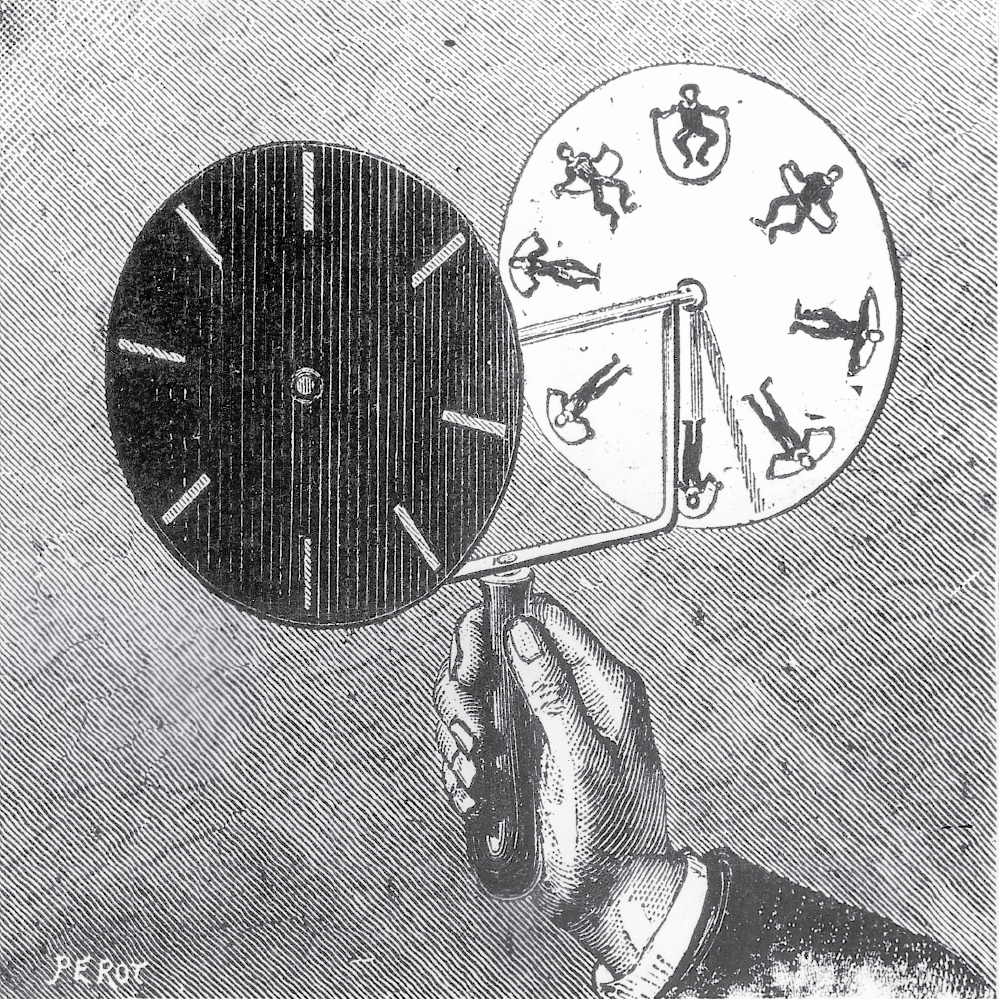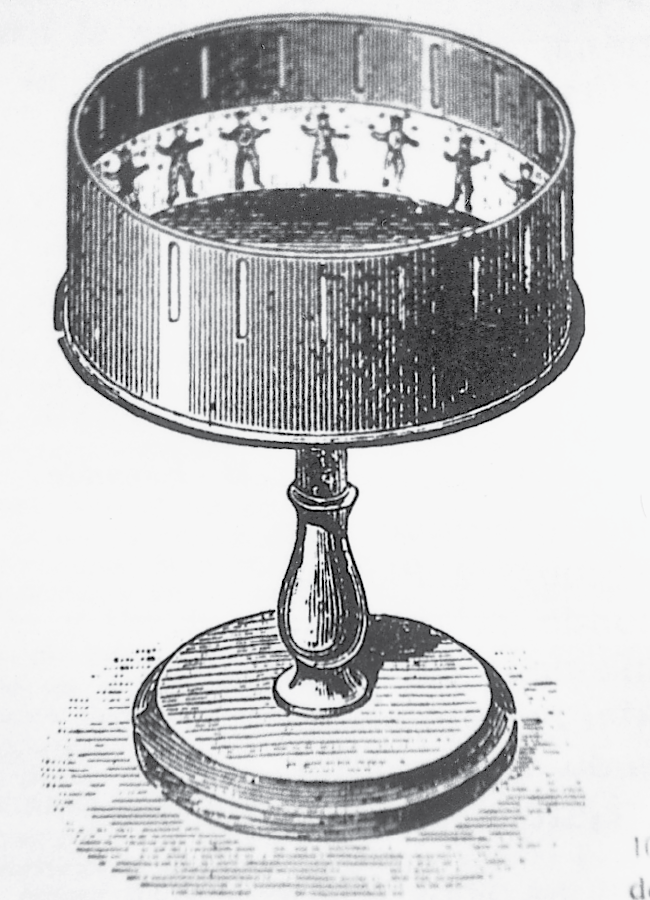Chapter One Quiz Review
1/29
Earn XP
Description and Tags
History of Motion Pictures
Name | Mastery | Learn | Test | Matching | Spaced |
|---|
No study sessions yet.
30 Terms
Scientists needed to realize that the human eye will perceive motion if a series of slightly different images is placed before it in rapid succession
What was the first requirement that needed to be met in order for the cinema to be invented?
Phenakistoscope
An optical toy independently created by Joseph Plateau and Simon Stampfer in 1832.

Zoetrope
An optical toy invented in 1833 that contained a series of drawings on a narrow strip of paper inside a revolving drum.

The capacity to project a rapid series of images on a surface
What was the second requirement that needed to be met in order for cinema to be invented?
Rapid photography, or the ability to quickly produce and expose photographs for use.
What was the third requirement that needed to be met in order for cinema to be invented?
Claude Niepce
Made the first still photograph on a glass plate in 1826, which had an exposure time of eight hours.
Photographs needed to be printed on a base flexible enough to be passed through a camera rapidly
What was the fourth requirement that needed to be met in order cinema to be invented?
George Eastman
Invented a still camera that made photographs on rolls of sensitized paper, known as a Kodak camera. This camera made photography simple for unskilled amateurs.
He also created transparent celluloid roll film, which was originally invented for still cameras but was later used in machines that took and projected motion pictures.
Experimenters needed to find a suitable intermittent mechanism for cameras and projectors.
What was the fifth and final requirement needed in order for cinema to be invented?
Intermittent Mechanisms
These usually consisted of a gear with slots or notches spaced around its edge. In the case of the cinema, this mechanism had to advance, stop in front of a shutter, and forward sixteen frames per second.
Eadweard Muybridge
When photographing running horses to study their gait, this photographs set up a row of twelve cameras, which each made an exposure in one-thousandth of a second. Each photo recorded one-half-second intervals of movement.
Etienne-Jules Marey
A physiologist who created a photographic gun, which exposed twelve images around a circular glass plate that made one revolution per second.
He eventually created a camera that used an intermittent mechanism to expose a series of photographs on a strip of paper at around 120 frames per second. As a result, he was the first to combine flexible film stock with an intermittent mechanism.
Emile Reynaud
The inventor of the Projecting Praxinoscope, which had a spinning drum like the Zoetrope, but whose moving images were viewed in a series of mirrors rather than through slots.
Kinetograph Camera and Kinetoscope Viewing Box
Invented by W.K.L Dickson for Thomas Edison, this camera and viewing box consisted of toothed gears that pulled Eastman film 35 mm wide through them both. Each frame had four holes punched through them, which allowed the gears to pull the paper through the camera and viewing box at a rate of 46 frames per second.
Bioscop
A projection system created by Max and Emil Skladanowsky that held two strips of film, each three and a half inches wide, running side by side.
Cinematographe
A camera invented by the Lumiere brothers that used 35 mm film and an intermittent mechanism modeled after a sewing machine. When placed in front of a magic lantern, this camera became part of the projecter as well.
Using this, the Lumiere brothers shot their films at sixteen frames per second, which soon became the new standard.
Woodville Latham and Sons
After creating a camera and projector that didn’t gain much attention, these three created a simple loop that created slack in the film and relieved its tension, which allowed longer films to be shown.
Jenkins and Armat
Created the Phantoscope projector, which had dim, unsteady projection. This along with more popular competition attracted skimpy audiences, leading to these two inventors’ split.
Vitascope
This projector was an improved version of the Pantoscope initially created by Jenkins and Armat. Edison agreed to manufacture this projector and became a great success.
Mutoscope
A peep-show device turned camera and projector that soon dominated the film industry because it was less likely to break down compared to the Kinetoscope. It was created by Herman Casler and Edison’s former business partner, W.K.L Dickson.
1) Peepshow devices
2) Projection systems
What were the two principal means of exhibition in the early days of the cinema?
Actualities
Non-fiction films in the early days of cinema.
Scenics
Short travelogues offering views of distant lands.
Topicals
Early films that depicted news events.These films often recreated current events in the studio because it was cheaper to do so and it made up for the fact that cameramen had not been at the actual scene.
The films were grouped together and shown as a single act in music halls or even in fairgrounds for cheap, which appealed to working-class audiences.
At first, how were films seen in England?
Films of The Spanish-American War of 1898
What helped revive the film industry after the astonishment surrounding movement and unusual sights reproduced on screen faded away?
Passion Plays
Single-shot films depicting scenes from Jesus’s life that helped revive the declining film industry.
AM&B used rollers instead of gears in order to move the film
Why did American Mutoscope and Biograph win its lawsuit against Edison?
American Vitagraph agreed to make films with Edison and deal in Edison films itself.
How did American Vitagraph survive after its lawsuit with Edison?
He made more films, especially longer films with the help of Edwin S. Porter
What did Edison do to counter his failed lawsuits against AM&B and American Vitagraph?